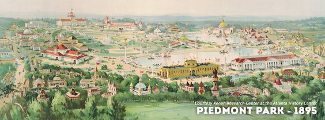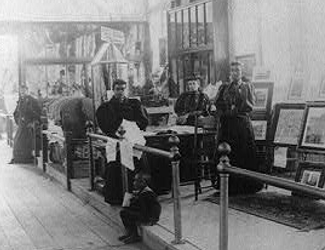Quick List Info

Dates Open - September 18 to December 31, 1895. Not open Sundays, open 90 days.
Attendance - 1,170,933 (total including Staff). 779,560 (paid).
International Participants - 18 Nations and Colonies.
Total Cost - $1,130,456.70. Reports state that the entire cost, including exhibitors was $2.5 million.
Site Acreage - 189 acres in today's Piedmont Park.
Sanction and Type - Prior to the Bureau of International Exhibitions. Would be considered a Special style Recognized event today like those on the 2-3 or 7-8 years of the decade. Exposition received Federal appropriation of $200,000. State Department lent its diplomatic channels to seek foreign exhibits, although diplomats did not, for the most part, seem to be actively soliciting foreign governments, with most work done by private agents.
Ticket Cost - Adult 50 cents; per capita 0.487. Fair got $380,000 from admissions.
Photo top center: Cotton States and International Expo fairgrounds in Piedmont Park, 1895, R.A. Ellis. Courtesy Library of Congress. Column Top: Map of the Exposition, 1895, Expo Authority. Courtesy Wikipedia Commons. Column Below: Interior of the Fine Arts Department, 1896, R.A. Ellis. Courtesy Library of Congress.

Other Histories of World's Fairs to Check Out











